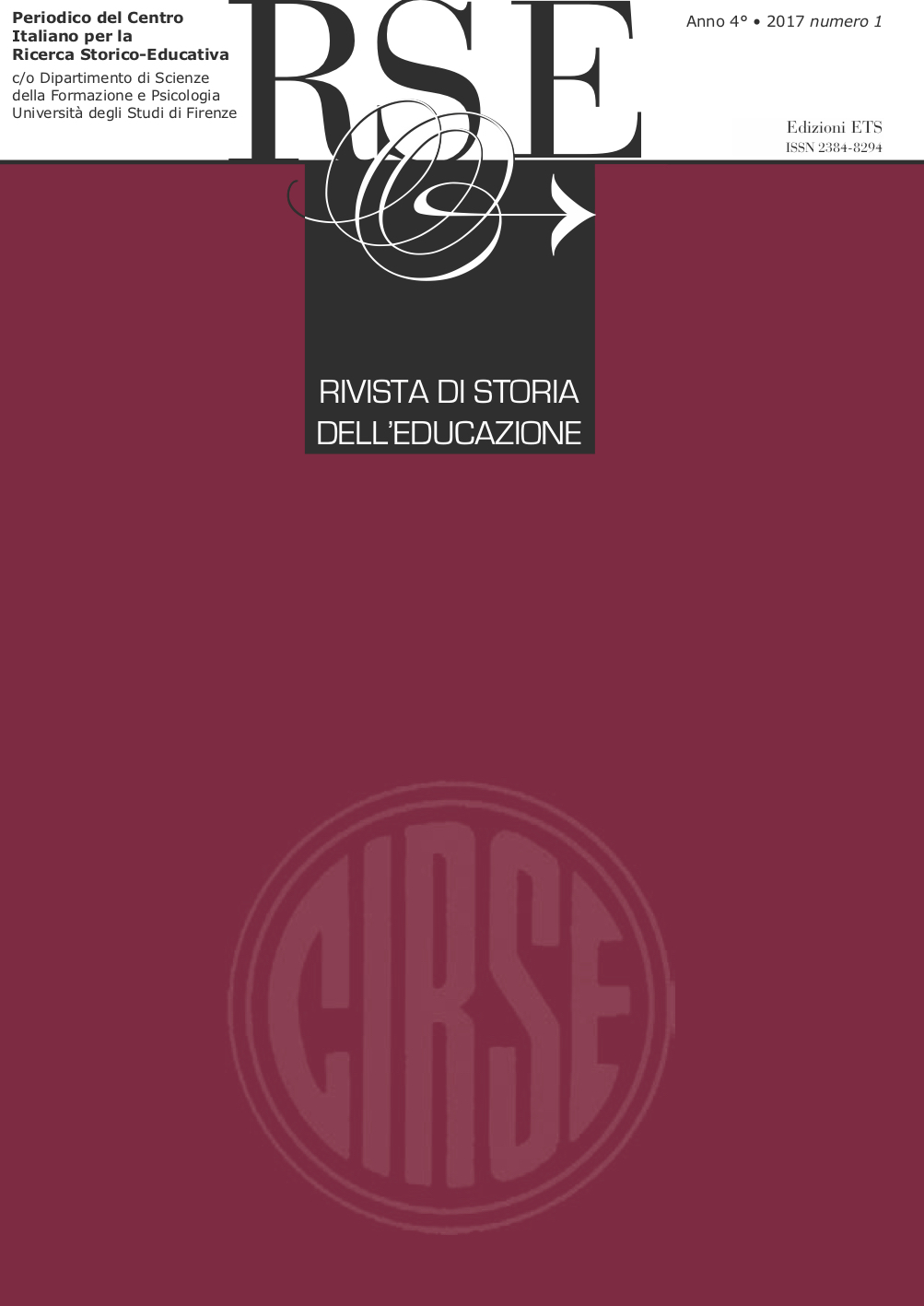Published 2018-06-09
Keywords
- rural education; Noêmia Cruz; Mallart y Cutó; active education; New Education Fellowship; nationalisms
How to Cite
Abstract
The article takes as its point of departure a localized experience, with the aim of illustrating how rural education was constituted as a battlefield involving social and economic dimensions in Brazil and abroad. We begin by investigating the pedagogic practice of educator Noêmia Saraiva de Mattos Cruz developed at the Butantan Rural Graded School in 1933, through which we intend to clarify representations of a country undergoing an agricultural expansion that demanded citizens wholesome in body and mind. That educator associated the official contents of teaching to rural activities such as silk culture, beekeeping, poultry farming, rabbit keeping, horticulture, silviculture, gardening and pomiculture, and gave visibility to her actions through a series of actions including the publication of the 1936 book Educação Rural (Rural Education), as well as talks and presentations in Conferences, articles to newspapers and pedagogic journals, and, above all, through the photographs she took of the activities of the Agricultural Club. Noêmia Cruz described her practice as a “pedagogy of action”, a reference to the Active School, a growing trend in Europe since the 1920s. In the few citations identified in her texts, we found reference to Spanish educator José Mallart y Cutó, who wrote about the relation between work and education. The books by Mallart y Cutó had large repercussion in Brazil, and were part of pedagogical libraries, apart from serving as inspiration to reflections about the rural world. Under a wider lens, we noticed that several countries associated to the New Education Fellowship made considerations about rural education strengthening the circulation of intercontinental pedagogical ideas, and connecting the localised experienced of Noêmia Cruz to discussions about rural education conducted at an international level.

